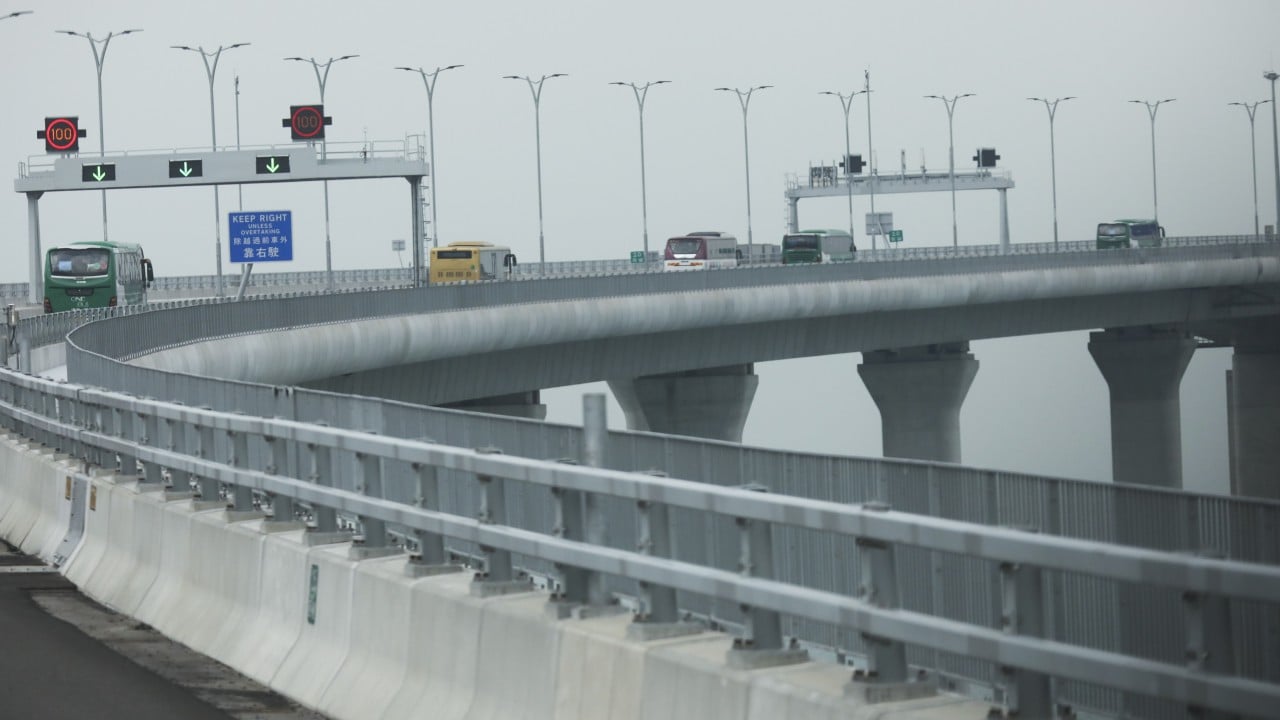Lawmakers and a former Hong Kong leader have urged the government to take a less restrictive approach to a scheme that will allow hundreds of private cars from mainland China and Macau to enter the city after a senior Beijing official singled out the initiative as being in need of “reform and breakthroughs”.
Their remarks on Tuesday followed a call by commerce minister Wang Wentao a day earlier to overcome restrictions in the roll-out of the “Southbound Travel for Guangdong Vehicles” scheme as he briefed local officials, lawmakers and businesspeople on the “spirit” of the Chinese Communist Party’s third plenum, held in July.
Wang noted in his speech on Monday that “some measures” would have to be taken to overcome restrictions in facilitating southbound travel by mainland Chinese motorists, and pointed to the new road link between Zhongshan and Shenzhen to underscore the Hong Kong-Zhuhai-Macau Bridge’s “enormous potential”.
Under the local government’s current plan, several hundred private cars from Macau and Guangdong province will be able to cross the mega bridge each day when the scheme debuts by the end of this year or in early 2025.
But motorists must park at a facility with more than 1,000 automated spaces near Hong Kong airport before proceeding to take a flight or enter the city via the mega bridge’s checkpoint in the scheme’s initial phase. No details or a timeline for a second stage have been announced.

Meanwhile, more than 64,000 cars have been allowed to make their way into Guangdong under the “Northbound Travel for Hong Kong Vehicles” scheme, which marked its first anniversary on July 1.
Former city leader Leung Chun-ying, a vice-chairman of the country’s top political advisory body, renewed his call for local authorities to allow cars from outside Hong Kong to travel on Lantau Island under a quota system.
“This is not just a matter of reciprocity but will be good for the Lantau economy including the airport,” he told the Post on Tuesday.
“This is purely a policy matter. I do not think that there are insurmountable legal or technical obstacles.”
Lawmaker Michael Tien Puk-sun proposed a new approach, urging the government to build a park-and-ride facility near Sunny Bay MTR station to provide easy access to public transport and Disneyland, a big draw for tourists, saying the approach was made feasible by vehicle-tracing technology.
He stressed outside vehicles must be subject to restrictions, such as a ban from all roads except the route to the parking facilities.
“I am definitely against left-hand-drive vehicles driving around in Hong Kong. Driving habits on the mainland are very different from those in Hong Kong as what we find unacceptable can be commonplace on the mainland,” he said.

Recent jams on the mega bridge over long weekends had also shown that the most imminent bottlenecks lay on the other side of the border, legislator Gary Zhang Xinyu said.
He also called for a rethink of the city’s first-stage plan for the southbound travel scheme, noting that authorities should first identify the target audience.
The most sought-after top spenders from the mainland, he suggested, might prefer to sit in a limousine to cross the bridge and get into the city centre.
“Cars are very common on the mainland and it is impossible for us to encourage all tourists to come to Hong Kong by car,” he said.
“I don’t think [the government] has a direction at all. Why would they leave the car at the airport? Is it purely for taking a flight, or is it for them to experience driving on the bridge? This doesn’t make sense. This is not logical.”
Lau Siu-kai, a consultant at the Chinese Association of Hong Kong and Macau Studies, a semi-official think tank, said the bridge was a stand-out example of wasted potential in delivering the desired benefits, such as integrating the city with the other side of the Greater Bay Area.
But he also maintained that the commerce minister only pointed to the vehicle travel scheme to illustrate the room for reforms and more innovative problem solving, saying local authorities should also apply a reformist mindset in cutting red tape for development.
Wang and Shen Chunyao, chairman of the Legislative Affairs Commission of the National People’s Congress Standing Committee, on Tuesday hosted a meeting on the third plenum with about 50 representatives of business chambers, universities and the technology sector.
They were set to attend a televised briefing on the topic in Macau on Wednesday.


